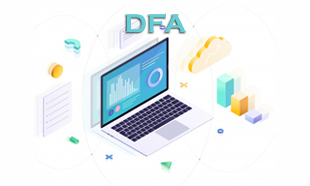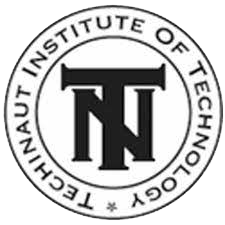0
"Diploma in Financial Application (DFA)" Course at DINESH EDUCATION, a Techinaut Institute of Technology Franchise in SEMILIGUDA, ODISHA
In today's digital era, proficiency in financial applications is essential for individuals pursuing careers in accounting, finance, and business management. Recognizing this demand, Dinesh Education, a franchise of Techinaut Institute of Technology, offers a six-month Diploma in Financial Application (DFA) course. Situated in Semiliguda, Odisha, this program aims to equip students with the skills and knowledge needed to effectively utilize financial software applications for accounting, budgeting, payroll management, and taxation. This essay provides a detailed overview of the course curriculum, covering its objectives and each section comprehensively.
THE OBJECTIVE OF THE COURSE:
The Diploma in Financial Application (DFA) course at Dinesh Education is designed to achieve the following objectives:
- Basic of Computer: Introduce students to fundamental concepts of computing, including hardware, software, and basic operations, to provide a foundational understanding of computer systems.
- Computer Appreciation: Familiarize students with the importance and utility of computers in financial applications, including data processing, analysis, and reporting.
- Word Processing: Develop proficiency in word processing software for creating, formatting, and editing financial documents, such as reports, letters, and memos.
- Spreadsheet Package: Equip students with skills in spreadsheet software for financial analysis, budgeting, and data management, including creating formulas, charts, and graphs.
- Presentation Package: Teach students how to use presentation software to communicate financial information effectively through presentations, slideshows, and reports.
- Introduction to the Internet: Provide an overview of Internet fundamentals relevant to financial applications, including online research, communication, and security considerations.
- E-mail: Familiarize students with e-mail communication principles and practices, including composing, sending, receiving, and managing financial-related e-mails.
- Introduction to Tally: Introduce students to Tally, a popular accounting software used for financial management, including installation, configuration, and basic operations.
- Administration in Tally: Develop proficiency in Tally administration, including user management, company setup, and security configurations.
- Managing Groups, Ledgers, and Vouchers: Teach students how to manage groups, ledgers, and vouchers in Tally for accurate financial recording and reporting.
- Cost Centres and Cost Categories: Explain the concept of cost centers and cost categories in financial management and demonstrate their implementation in Tally.
- Introduction to Budgets: Provide an understanding of budgeting principles and techniques, including creating, managing, and monitoring budgets using financial software.
- Introduction to Vouchers: Explain different types of vouchers used in accounting transactions and demonstrate their entry and management in Tally.
- Currencies (Multiple Currencies and Foreign Exchange): Teach students how to handle multiple currencies and foreign exchange transactions in financial software.
- Inventory Information: Provide knowledge of inventory management concepts and demonstrate their implementation in Tally for accurate stock tracking and valuation.
- Voucher Entry: Develop skills in voucher entry, including recording various types of financial transactions, such as sales, purchases, receipts, and payments, in Tally.
- Displaying Information from Tally: Demonstrate how to generate and customize reports and financial statements from Tally for analysis and decision-making purposes.
- Introduction to Taxation: Provide an overview of taxation principles, including direct and indirect taxes, and demonstrate their implementation in Tally for tax compliance.
- Introduction to Payroll: Introduce students to payroll management concepts, including salary processing, deductions, and statutory compliance, using financial software.
SECTION 1: BASICS OF COMPUTER
Fundamentals of Computing:
Introduction to computer hardware, software, and basic operations, including file management and data processing.
Computer Hardware:Overview of computer hardware components, including CPU, memory, storage devices, and peripherals.
Computer Software:Explanation of software types, including system software, application software, and their roles in financial applications.
SECTION 2: COMPUTER APPRECIATION
Role of Computers in Financial Applications:
Understanding the importance and utility of computers in financial data processing, analysis, and reporting.
Data Processing:Exploring how computers process financial data efficiently, accurately, and securely compared to manual methods.
Financial Analysis:Introduction to financial analysis techniques and how computers facilitate complex calculations, modeling, and forecasting.
SECTION 3: WORD PROCESSING
Introduction to Word Processing:
Overview of word processing software and its features for creating, formatting, and editing financial documents.
Document Formatting:Techniques for formatting financial documents, including font styles, sizes, alignment, and page layout.
Financial Report Writing:Skills for writing financial reports, letters, and memos using word processing software effectively and professionally.
SECTION 4: SPREADSHEET PACKAGE
Introduction to Spreadsheets:
Overview of spreadsheet software and its features for financial analysis, budgeting, and data management.
Data Entry and Formatting:Techniques for entering financial data, formatting cells, and applying formulas and functions in spreadsheets.
Financial Analysis and Modeling:Skills for performing financial analysis, creating financial models, and generating reports using spreadsheet software.
SECTION 5: PRESENTATION PACKAGE
Introduction to Presentation Software:
Overview of presentation software and its features for communicating financial information effectively.
Slide Design:Design principles for creating visually appealing and informative financial presentations, including layout, graphics, and animation.
Presentation Delivery:Techniques for delivering financial presentations confidently and engagingly to various audiences.
SECTION 6: INTRODUCTION TO THE INTERNET
Web Browsing:
Techniques for web browsing, including accessing financial resources, research, and information online.
Online Communication:Understanding the role of e-mail, messaging, and collaboration tools in financial communication and collaboration.
Internet Security:Awareness of internet security risks and best practices for protecting sensitive financial information online.
SECTION 7: EMAIL COMMUNICATION
E-mail Communication:
Introduction to e-mail communication principles and practices, including composing, sending, receiving, and managing financial-related e-mails.
E-mail Etiquette:Guidelines for professional e-mail communication in financial settings, including tone, formatting, and confidentiality.
SECTION 8: INTRODUCTION TO TALLY
Overview of Tally:
Introduction to Tally software, its features, and applications in financial accounting and management.
Installation and Configuration:Steps for installing and configuring Tally software for financial accounting and reporting.
Basic Operations:Understanding basic operations in Tally, including navigation, menu options, and data entry.
SECTION 9: ADMINISTRATION IN TALLY
User Management:
Managing user accounts, permissions, and access levels in Tally for secure financial data management.
Company Setup:Setting up company profiles, financial years, and accounting periods in Tally for accurate financial reporting.
Security Configurations:Configuring security settings and access controls in Tally to safeguard financial data from unauthorized access.
SECTION 10: MANAGING GROUPS, LEDGERS, AND VOUCHERS
Creating Groups and Ledgers:
Setting up groups and ledgers in Tally to categorize and organize financial transactions effectively.
Recording Vouchers:Entering and managing different types of vouchers, including sales, purchases, receipts, and payments, in Tally.
SECTION 11: COST CENTRES AND COST CATEGORIES
Introduction to Cost Centers:
Understanding the concept of cost centers and their importance in financial management and analysis.
Managing Cost Centers:Creating and managing cost centers in Tally for tracking and allocating expenses accurately.
SECTION 12: INTRODUCTION TO BUDGETS
Budgeting Principles:
Overview of budgeting principles and techniques for setting financial goals and plans.
Creating Budgets in Tally:Using Tally software to create and manage budgets for income, expenses, and cash flow.
SECTION 13: INTRODUCTION TO VOUCHER
Types of Vouchers:
Explanation of different types of vouchers used in financial transactions, including payment vouchers, receipt vouchers, and journal vouchers.
Voucher Entry in Tally:Demonstrating how to enter and manage vouchers in Tally for recording financial transactions accurately.
SECTION 14: CURRENCIES
Handling Multiple Currencies:
Understanding how to handle transactions in multiple currencies and perform foreign exchange conversions in Tally.
Foreign Exchange Transactions:Recording and managing foreign exchange transactions, including currency conversion rates and exchange gains/losses, in Tally.
SECTION 15: INVENTORY INFORMATION
Inventory Management Basics:
Overview of inventory management concepts, including stock tracking, valuation methods, and inventory control.
Managing Inventory in Tally:Using Tally software to manage inventory information, including stock levels, item codes, and pricing.
SECTION 16: VOUCHER ENTRY
Recording Financial Transactions:
Techniques for entering different types of financial transactions, such as sales, purchases, receipts, and payments, in Tally.
Voucher Management:Managing vouchers, including editing, deleting, and reconciling transactions, in Tally for accurate financial recording.
SECTION 17: DISPLAYING INFORMATION FROM TALLY
Generating Reports:
Using Tally software to generate financial reports, statements, and summaries for analysis, decision-making, and compliance purposes.
Customizing Reports:Customizing report layouts, formats, and filters in Tally to meet specific financial reporting requirements and preferences.
SECTION 18: INTRODUCTION TO TAXATION
Taxation Basics:
Overview of taxation principles, including direct and indirect taxes, and their implications for financial management and reporting.
Tax Compliance in Tally:Using Tally software to manage tax-related tasks, including calculation, filing, and reporting of taxes.
SECTION 19: INTRODUCTION TO PAYROLL
Payroll Management Basics:
Introduction to payroll management concepts, including salary processing, deductions, and statutory compliance.
Payroll Processing in Tally:Using Tally software to process payroll, including employee salary calculation, deduction management, and statutory reporting.
CONCLUSION:
The Diploma in Financial Application (DFA) course at Dinesh Education offers a comprehensive curriculum covering essential financial applications and skills. By providing theoretical knowledge and practical training in software usage, accounting principles, and financial management techniques, the course prepares students for various roles in accounting, finance, and business management. With a focus on hands-on learning and real-world applications, Dinesh Education remains committed to empowering students with the skills and knowledge needed to succeed in the dynamic field of financial applications.
Lectures = 130 HRS
Practical/Tutorials = 130 HRS
Total = 260 HRS


